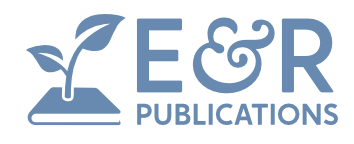
How to Safely Write Private Notes in Public Places
Share
5 surprisingly useful writing systems for adults (and adventurous kids)

Some children have trouble processing their experiences and emotions. They're often afraid of writing them down because someone might see, or get angry, or—even worse—make fun.
I was one of those children.
It was at school that I discovered a channel for self expression that felt safe: the exciting world of secret codes. I still use one of these codes, Second Shaw, today.
Imagine a professional setting where you can fearlessly add personal or confidential thoughts and insights to your regular notes. This is especially helpful when your notebook is on a shared table, open for anyone to read over your shoulder. Secret codes aren't just for kids.
Let’s look now at four writing systems that can stand alone as (relatively) secret codes.

1. Runes
Archeologists have found runes in inscriptions dating back as far as 150 CE. This was the script of the Vikings, and other Germanic-speaking people. I was fascinated with the runes in the copy of The Hobbit that we had at home when I was growing up. I still have the secret journal I kept as a twelve year old, written entirely in runes.
If you want to learn Cirth so you'll be able to correspond in Sindarin with your Grey Elvish friends, best of luck with that! You're on your own. I've taken the easy road with a simple substitution system.
By the way, runes look great written with a chisel nib pen held at a 45˚ angle, if that's your thing.
Rune learning resources:

2. Second Shaw (no, it's not shorthand)
George Bernard Shaw felt that the use of Latin characters to write English was a waste of time, paper, and effort. His will provided funding for anyone who could come up with an alphabet that met his criteria. Kingsley Read won a share of the £500 prize with his Shavian alphabet. Second Shaw is the re-designed version.
With practice it’s estimated you can reach a speed of 60 words a minute.
There is an extensive tutorial for writing Second Shaw (the name I prefer to use), or Quickscript, as it is commonly known, in Coles Funny Picture Book number 2. That's where I first saw it.
I taught myself to write in Second Shaw when I was fourteen, and I still use it today. This secret code is helpful for any private information you want to have on hand, and for journal entries that you don't want read by casual journal-snoopers (may the fleas of a thousand camels infest their armpits!).
The Second Shaw symbols for ‘of’ and ‘the’ come up regularly when I take notes in English, as they’re so quick to write. It’s a very efficient writing system.
Cole Turnley, commenting on his enthusiasm for Second Shaw:
“Perhaps someone else will greet it with the same exaltation, some day, some year, somewhere: some influential writer, some innovative school-teacher, some audacious (and safe-seated) politician, some humanitarian and beneficent millionaire. Or it could turn out to be you.”
Second Shaw learning resources:

3. Tengwar (Elvish)
The most recent addition to my arsenal of codes is Tengwar. You've likely seen Tolkien’s brilliant creation written on the One Ring in LOTR. This beautiful script is nowhere near as fast to write as Second Shaw, but it’s beautiful enough to be worth it. Writing someone’s name in the Elvish script is a fun, nerdy party trick.
I use Tengwar to write English, but you can teach yourself Sindarin or Quenya if you’re really keen.
Tengwar learning resources:

4. Hangul
It surprised me to learn that the supremely logical Korean script can be adapted to write other languages. No need for any prior knowledge of Korean. Each character is made up of little blocks stacked together, making it very space efficient.
I’m sure you don’t need me to tell you that this won’t be effective as a secret code if you work with Koreans. Maybe you could mix up the letters and symbols, but I think it’d be super cool to learn how to pronounce Korean words even if I don’t know what they mean.
I haven’t yet tried this one out, but I’d like to.
Hangul learning resources:
- Learn Hangul
- Hangul to English detailed instructions
- Hangul to English Quora question
More Writing System Inspiration
- Omniglot: an online encyclopedia of writing systems and languages
- Cyrillic: try borrowing the symbols that don't look like their English counterparts
- Phoenician
Why You Should Build Your Own Secret Code
The fifth code that I promised you in the headline is the one you’ll be building for yourself.
Why would you want to do that? My reason is a mixture of stable paranoia (I’ve decided that’s a real thing) and the secret delight of knowing I’ve created something just for me.
You see, anyone who can read this story has the ability to become fluent in the writing systems I’ve described above. That includes the people you might not want reading your private notes.
Imagine a hypothetical situation from The Office —
Dwight is using runes to keep incriminating notes on other staff members’ policy infringements. Jim has seen the notes from a distance, and is highly motivated to learn how to decipher them. He snaps a photo over Dwight’s shoulder and goes home to study the code. Jim’s plan is to add to those notes an incriminating Dwight-centric line or two of his own.
Here’s how to foil the Jims in your life: symbol layering.
Take elements from two or more writing systems and combine them in a way that isn't obvious, but which makes sense to you. Memorise the key to your system and keep written copies well away from meddling hands, eyes, and smartphone cameras.
When I'm feeling particularly creative—or paranoid—I'll mix some phonetic French words with English while writing Second Shaw. Take that, Jim!
Elements of a Good Secret Code
You’ll want your writing system to be both secret and easy to remember, so it needs the right amount of complexity; no more and no less. We’re not talking about a code that will take the likes of Alan Turing to decipher.
Your system won't be bulletproof, but you can make it almost impossible for a casual observer to read in passing.
When building your secret writing system, aim for—
- Simple, easy to remember shapes
- Symbols that are quick to write
- A way to write numbers that don't look like standard Arabic
You can ramp things up a notch by adding single symbols for combination sounds and for common words like ch, sh, th, ng; and, be, a, the, to, if, as, at, in.
Practice by Copying Texts You Know and Like
When I was learning Second Shaw I'd write out whatever was close at hand. That worked, but it wasn't the most interesting exercise.
I recommend choosing a text that you already know and like in English—a topic that appeals to you, or something you would like to memorise. Transcribing it into your new writing system will be painstaking at first, but before long you'll find yourself picking up speed.
Even ten minutes a day, four or five days a week will be enough if you keep at it for a month or two.
Once you've mastered the basics, it's time to push yourself. There'll be a few troublesome symbols or sound combinations that trip you up more than others. Write out a list of English words that use them—or make up a story—then transcribe them into your new script. Repetition is key!
You can also try associating the symbol with a noun containing that letter. In Cyrillic, the symbol for the P sound (Π) looks like pi (π). You could imagine that the S in Tengwar looks like a snake.
Use your imagination and come up with a picture-story for each symbol.
Learn It Young, Keep It Forever
I put in many hours writing out pages and pages of Second Shaw when I was young, so it’s burned into my brain. There have been years when I didn't use it at all, but that early foundation means it doesn't take long to revise.
Here I am, over 50, able to write fluently and rapidly in a script that (almost) no one else can understand! Yes, it still gives me a buzz. Do the children in your care a favour, and at least give them the chance to discover if they’re inclined toward learning a new writing system.
You may already be using simple "secret codes" in math class if you're a teacher. Look for the students who latch on to the concept and see if they're ready for a more advanced system.
Takeaway
- Kids love secret codes! Some adults do, too.
- Writing in code can help children and adults to express things they aren't ready to share
- Having a judgement-free space to write experiences and feelings can be great for mental and emotional health
- Create your own secret code by combining elements of existing writing systems
- Memorise the symbols in your secret code by associating the shapes of symbols with actual objects
- You're likely to be faster at writing than you are at reading back what you’ve written—remember to practice both.
Disclaimer and Caution:
The information presented in this story is solely to inform and should not be used to treat serious mental or emotional problems. Seek professional help when needed.
Ellane is part of the team at E&R Publications—click to see what we’ve been making, just for you! We’re here to make learning a joyful experience of discovery, delight, and simplicity.
